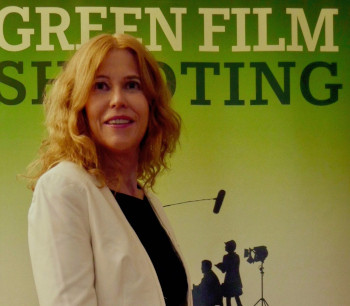

Sustainable Stop-Motion: Industry Experts Provide Tips To Producing Green Animation
Sustainable practices in the filmmaking industry are becoming increasingly important in the world of animation.
On Tuesday, a group of industry professionals focused on improving filmmaking best practices met on Facebook to answer the main questions that filmmakers are asking about green stop-motion production.
Why is green filming the future of the film industry? What are the rules of green puppet making? What does a green set look like nowadays? And what are the biggest challenges to adopting green filmmaking techniques?

Tuesday’s talk was moderated by Momakin’s Paulina Zacharek, co-organizer of Animarkt Stop Motion Forum, originator of the StopMoLab program, and initiator of the “green guide” which will help to minimize the harmful impact of film production on the environment.
Joining Za was Mexican screenwriter and animator Arturo Tornero, who is working with fellow StopMoLab participant Nabí Orozco Torres and scientist Sandra Pascoe Ortiz to replace silicone with biodegradable alternatives in stop-motion film production.

The panel’s third participant was Birgit Heidsiek, who has devoted her life’s work to environmental causes. She is a lecturer, journalist, and instigator of numerous eco-friendly events and programs.
Below, we’ve highlighted six takeaways from the talk that stop-motion filmmakers can consider when planning their future projects.
“Green” Filmmaking Isn’t Just About Carbon Footprint
Heidsiek’s experience is largely in the live-action filmmaking sector, and when she started meeting with stop-motion filmmakers she was alarmed at how dangerous many of the materials used in the process can be. She argued that sustainable filmmaking techniques don’t just protect the environment, but they can create a safer work environment for the artists working on set.
Better than Recycling
In her list of priorities for creating more sustainable shooting conditions, Heidsiek ranked recycling behind prevention and preparing for reuse. She explained that while recycling is a vastly preferable end to shipping waste off to landfills, sustainable-minded filmmakers should be more concerned with preventing waste creation and preparing the materials they do use to be reused.
Bioplastics and Other Sustainable Materials

A significant portion of the talk was dedicated to the myriad of materials that are being manufactured now which can be implemented in the stop-motion filmmaking process. Tornero showed off a human-shaped model made of a cactus-based bioplastic produced in Guadalajara, Mexico. Heidsiek sang the praises of a polystyrene substitute being manufactured in Germany made from popcorn. And Débora Mendes, who was watching the stream, commented that she’s using bioplastics made from pine trees to replace silicone in her stop motion work.

Hurdles
The nearly 75-minute talk was optimistic about the future of sustainable stop-motion filmmaking, but the speakers didn’t pretend that the changes which need to be made will necessarily be easy. Some materials, Heidsiek mentioned modeling glues specifically, don’t have great alternatives yet. She also explained that in the world of filmmaking, where intellectual property laws control so much of the process, reusing models and sets is impossible for legal reasons, even if it’s the more sensible option.
It Takes a Village

Stop-motion filmmaking is, most of the time, a collaborative effort. Crews of artists work together towards a similar creative vision, but the panelists argued that they should also share a similar mindset regarding sustainable filmmaking practices. Filmmakers must educate their crews and establish guidelines that everyone follows. According to Heidsiek, “going green” is about more than just using non-toxic chemicals or creating less waste on set. Every part of development and production can be modified to reduce the ecological impact of a film shoot, from travel to catering to temperature control on set.
Be Adaptable
Tornero’s excitement about the materials of the future was on display throughout the talk; he could barely put down the models and setpieces he had all around him. However, he warned, filmmakers need to understand that new materials will come with limitations. In one example, he referenced a 3d printer that uses eggshells to create models, but pointed out that the end results aren’t as durable as their plastic counterparts. He advised filmmakers to be flexible and embrace the challenges that come with working with new, sustainable materials.
Pictured at top: A stop-motion figure modeled with bioplastics made from cactus, shared by Arturo Tornero.

